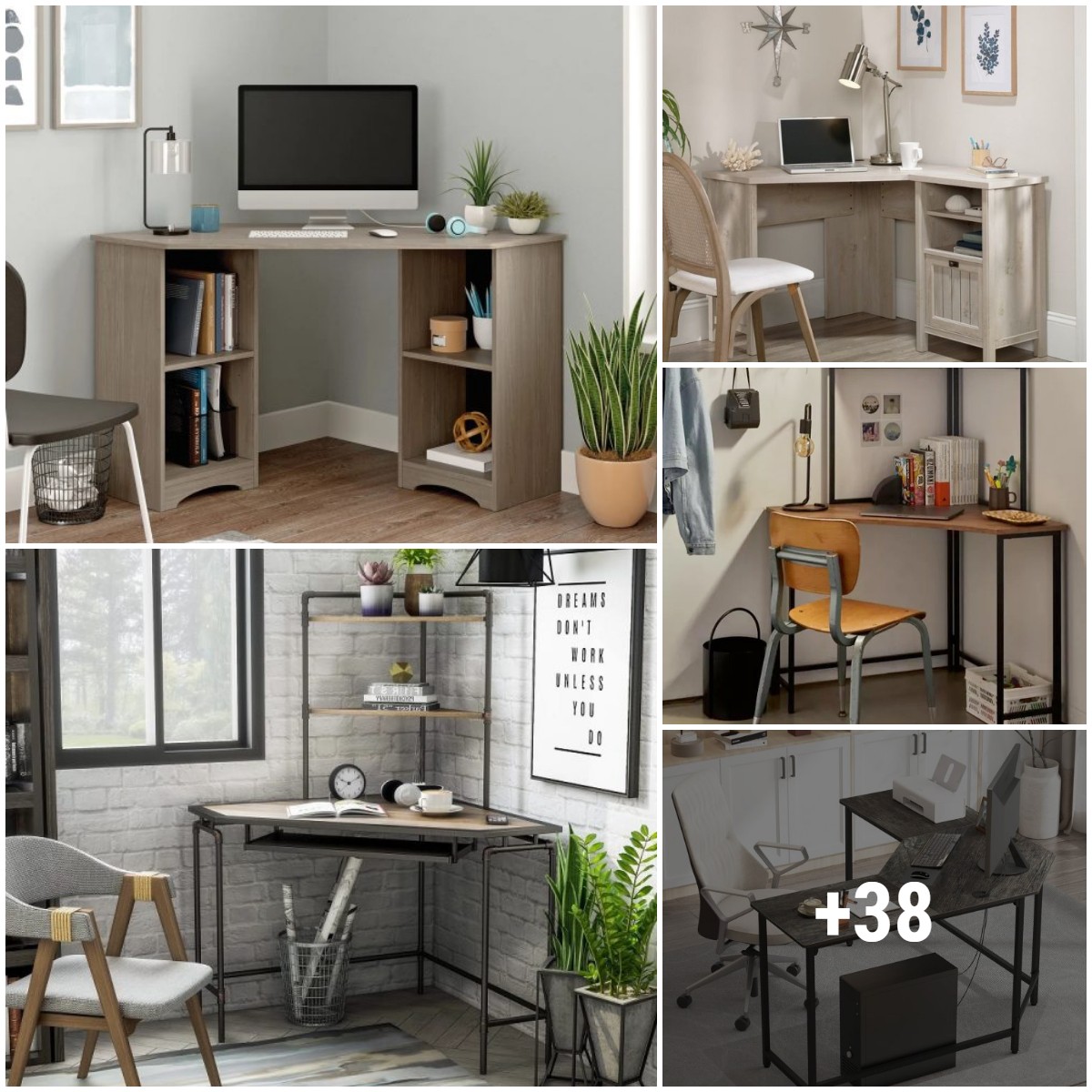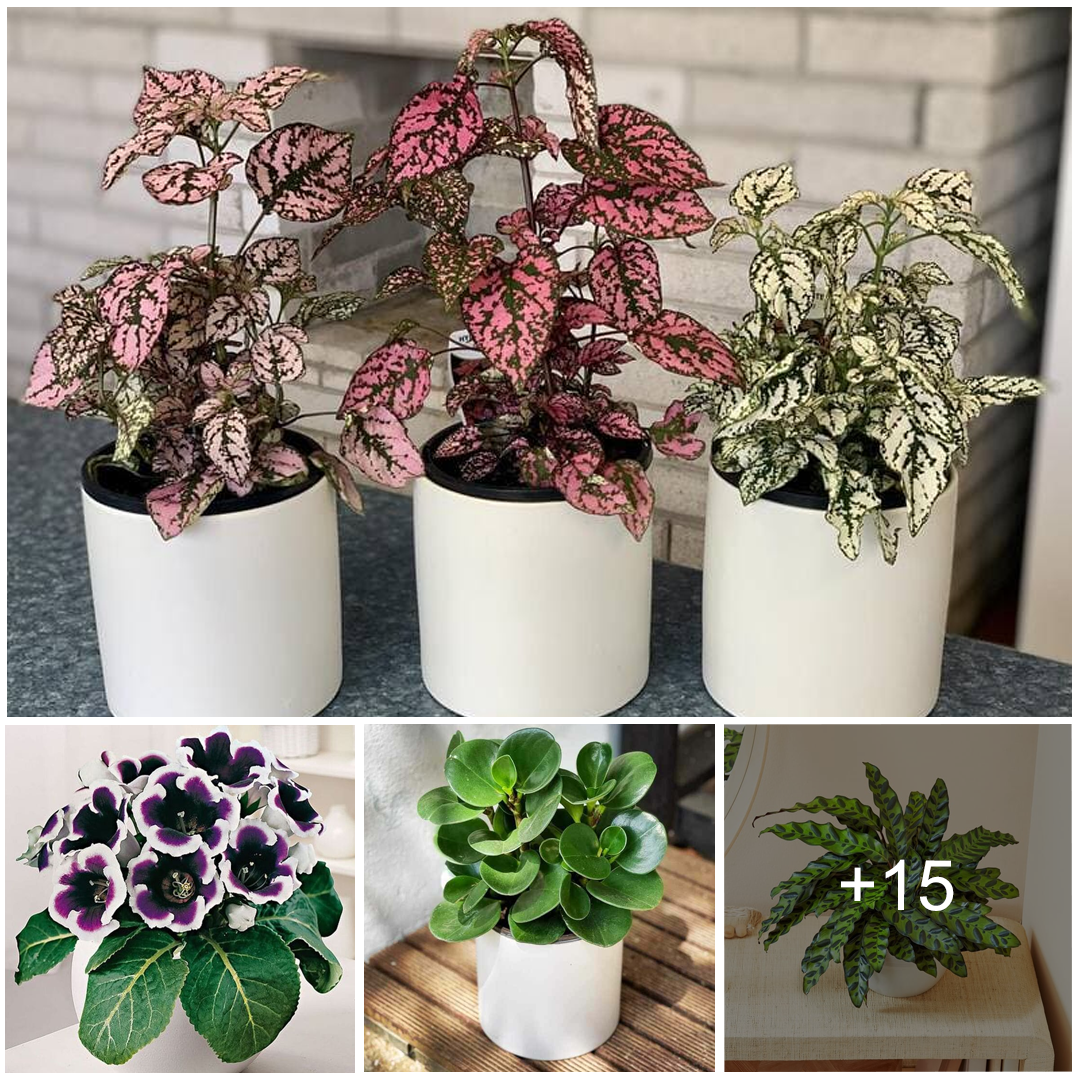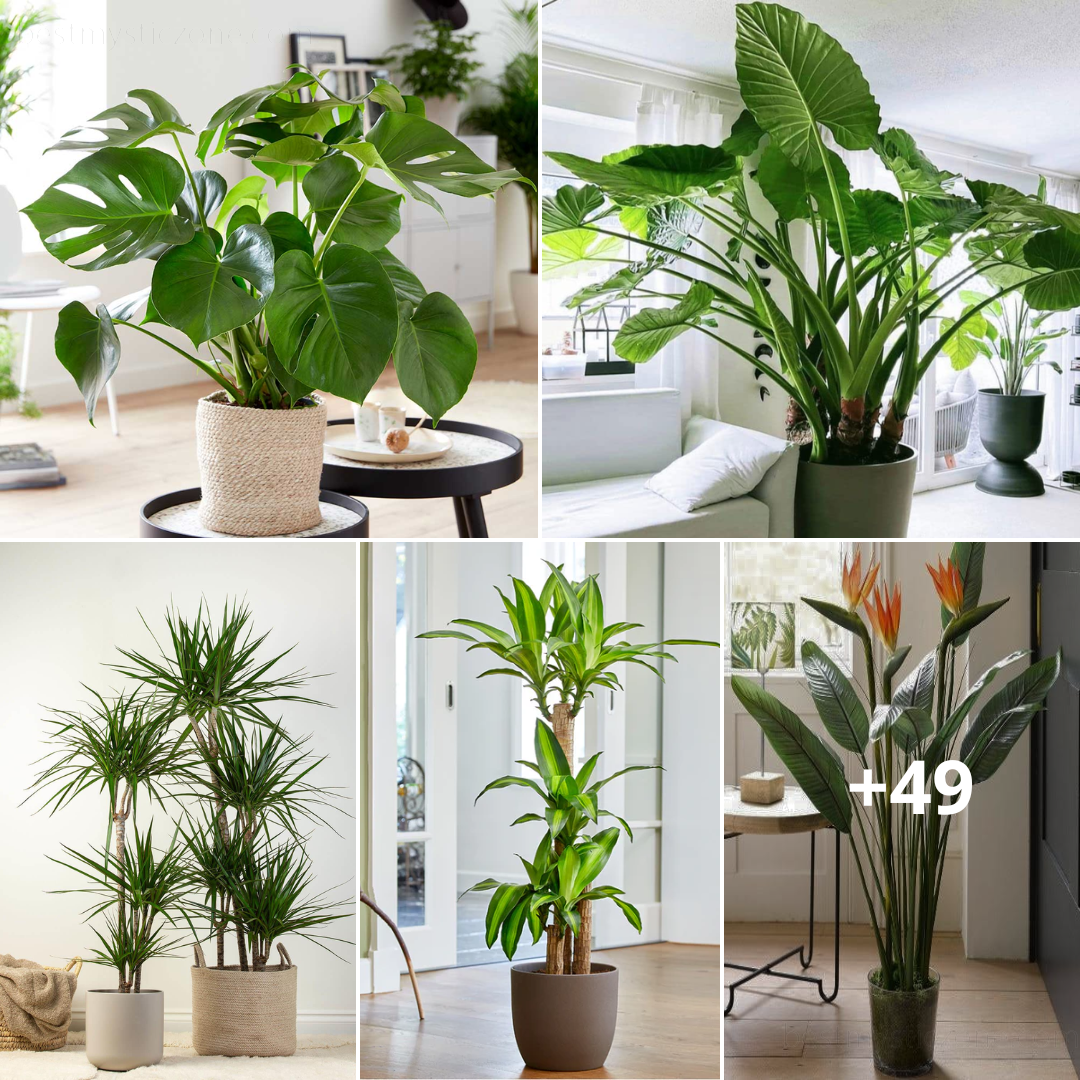Wow, another calathea post! It must be spring, because that’s the only time I am not violently battling with calatheas. Why is that, you ask? Well, because they are happy as clams outside in the humid Maryland summers.
Once their summer vacations are over, though—it’s game on. They are almost never happy in my exceedingly dry house, and I’m lazy when it comes to humidifiers. Don’t let me scare you off, though—keeping a calathea orbifolia looking its best is not rocket science.
It’s just a little more complicated than, say, caring for a snake plant. And there are some things about calathea orbifolia care that make it easier to care for than other plants, helping to even things out for you. So let’s get into it.
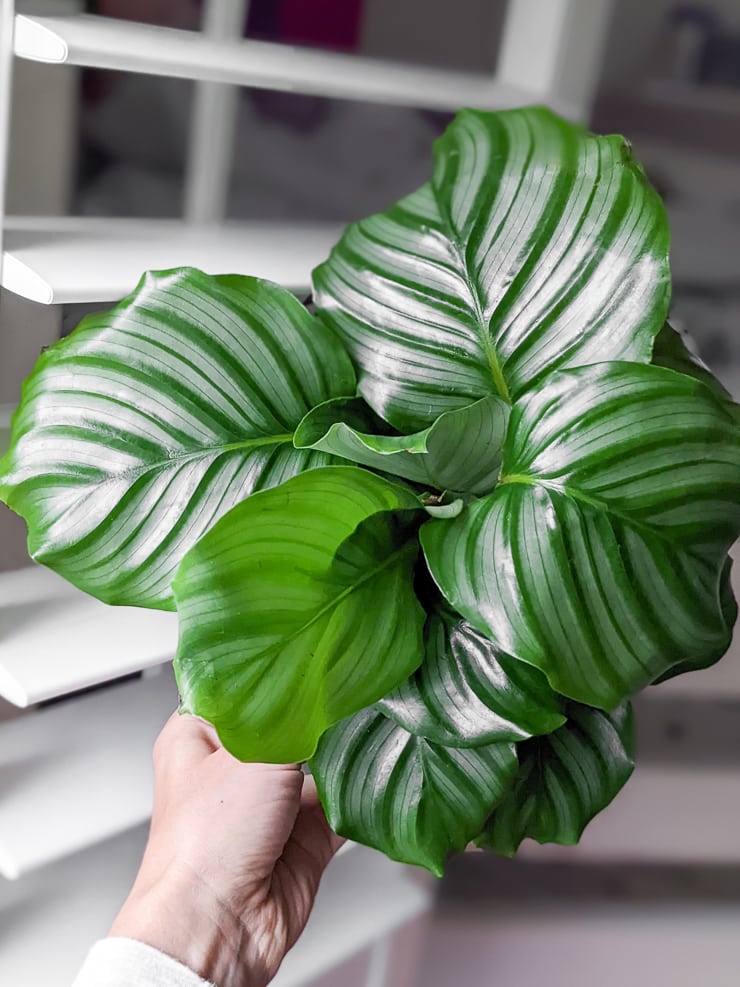
Calathea orbifolia is the scientific name, and the plant doesn’t have a common name from what I could find. I’ve only ever heard it referred to as calathea orbifolia. One note about that, though—as I’ve written about in past calathea care posts, it is technically now a goeppertia plant, not a calathea.
Orbifolia is one of many calathea varieties recently reclassified from calathea to goeppertia. So its technically correct name is goeppertia orbifolia. But, as with most plant reclassifications, it might take some time for it to catch on in plant communities.
Regardless, orbifolia is from South America, specifically Bolivia. Calathea and goeppertia are both part of the marantaceae family, which also contains the maranta (prayer plant) genus.
As close relatives, calathea plants take on some of those “prayer plant” features, though not all of them. A maranta folds nearly completely open and closed with a 24-hour light cycle. A calathea’s leaves move throughout the day, too.
This is due to the presence of a pulvinus joint in the area where the stems meet the leaves. This joint raises and lowers the leaves to help regulate sunlight intake. Pretty cool!
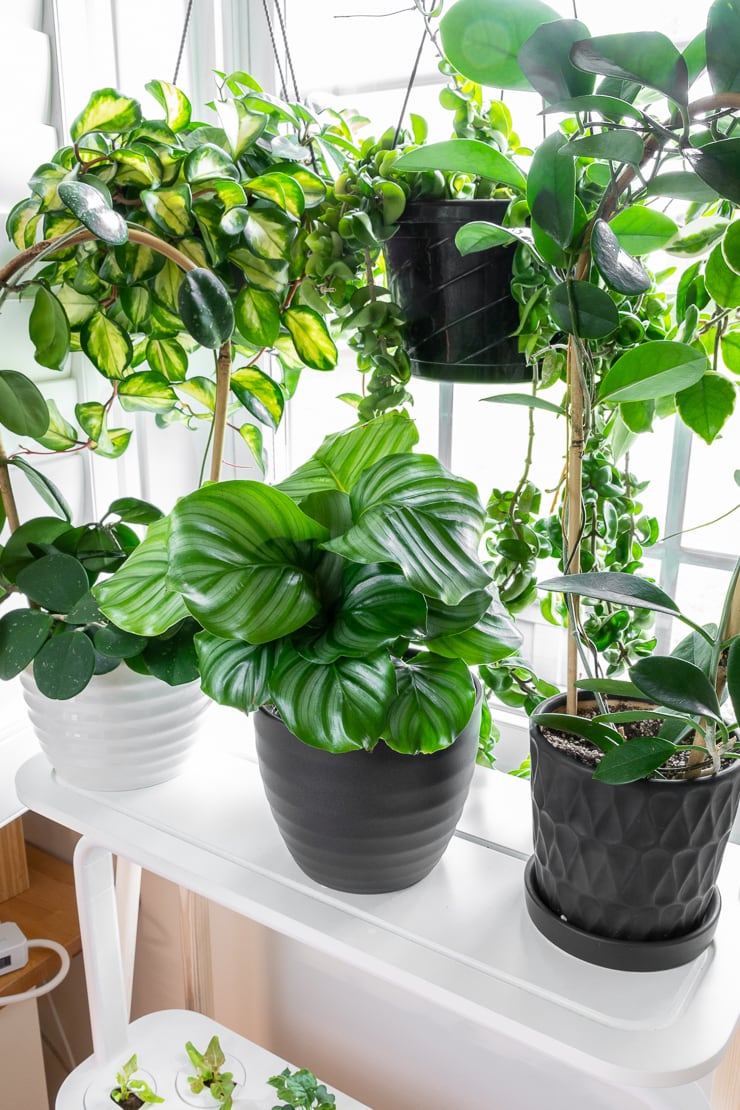
Calathea orbifolia is one of the largest calathea varieties. Typically these plants stay relatively small, calathea orbifolia can grow to a height of a couple feet. The leaves are large ovals topping out at nearly a foot in size, too.
But what makes the leaves so stunning isn’t necessarily just their size and shape—it’s their coloring. They are striped with a light green and silver on the top, and they have a very light and airy look to me. They remind me a lot of watermelon peperomia plants:
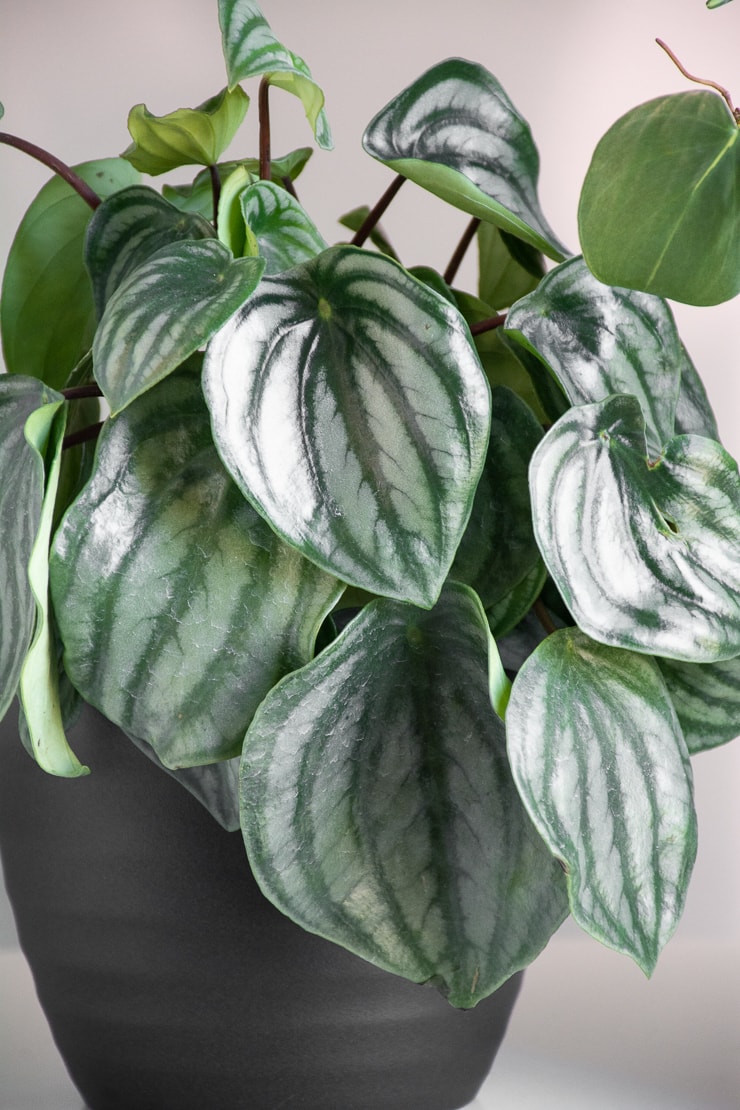
I wouldn’t say it is hard, but it is more challenging than a lot of other houseplants. It will clearly show you when something it wrong, and you can troubleshoot how to fix the problem.
It is about on par with other calathea plants as far as care needs go. So, a little high-maintenance, but ultimately that gorgeous foliage helps ease your pain.
So let’s jump into the meat of calathea orbifolia care. First up is light. I mentioned that there are some areas of calathea orbifolia care that make it easier to care for than some other plants. Light is one of those areas.
That’s because calathea orbifolia only requires medium light levels. And that means you have a bit more flexibility in where to put it in your home! No need for it to be hogging up your high-light space.
In fact, if your orbie gets too much light, the gorgeous coloring on the leaves will fade. Too much direct sun can also burn the leaves, leaving irreversible damage.
If you have your calathea orbifolia outdoors for the spring and summer, make sure it gets only direct morning sun, which is weaker. Any other sun should be dappled—like through deck slats or tree leaves. Complete shade is also fine.
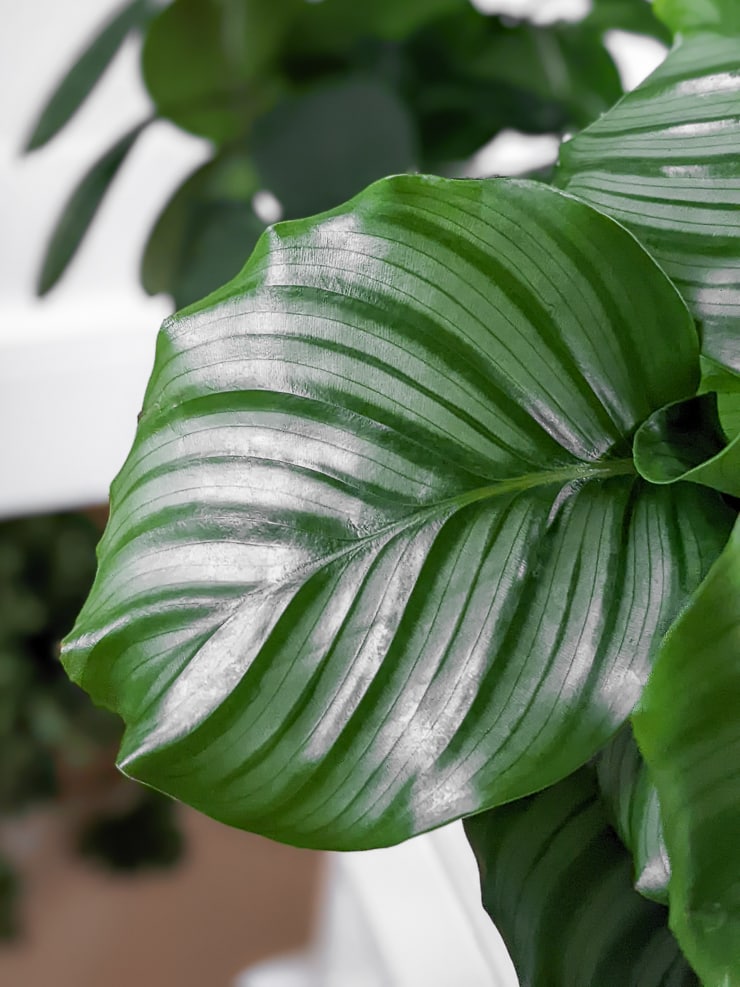
Watering your plant also isn’t terribly difficult. Calathea orbifolia enjoys moist soil. It does not like to dry out completely or even mostly between watering sessions.
You can water the plant when the top few inches of soil are dry. Unfortunately it’s super important to monitor this moisture level because the plant doesn’t really signal when it’s thirsty.
The leaves will just begin to die off, and the damage will not be reversible (unlike on plants that will wilt and perk right back up when watered).
When you do water your plant, you can use the opportunity to rinse off the tops and bottoms of your foliage. This is a best practice for pest control and keeping the leaves clean as well.
Water the plant thoroughly until water flows from the drainage holes. This is called “deep watering,” and is important to the health of the plant because it ensures the plant gets enough water while also flushing out the soil.
If you notice that your plant is declining in health and all other care seems to be fine, some people swear by watering their calatheas with only filtered or distilled water. I don’t personally do this because I don’t have enough time to spoil the plants that much. But you might want to try it and see if it helps!
Want more calathea content? Check out my Calathea Network Care guide, my Calathea Dottie Care guide, my Calathea Ornata Care guide, and my Calathea Dottie Care guide!
Calathea orbifolia requires a well-draining soil mixture. This helps to prevent overwatering and root rot while ensuring the soil stays moist.
I recommend buying any indoor or houseplant soil mixture that comes premixed with various soil amendments. I then typically throw in another handful of coco coir (a great peat moss alternative) and a handful of coarse perlite.
Coco coir is GREAT for retaining moisture while keeping the soil light, while perlite helps with drainage and the flow of oxygen to the roots.
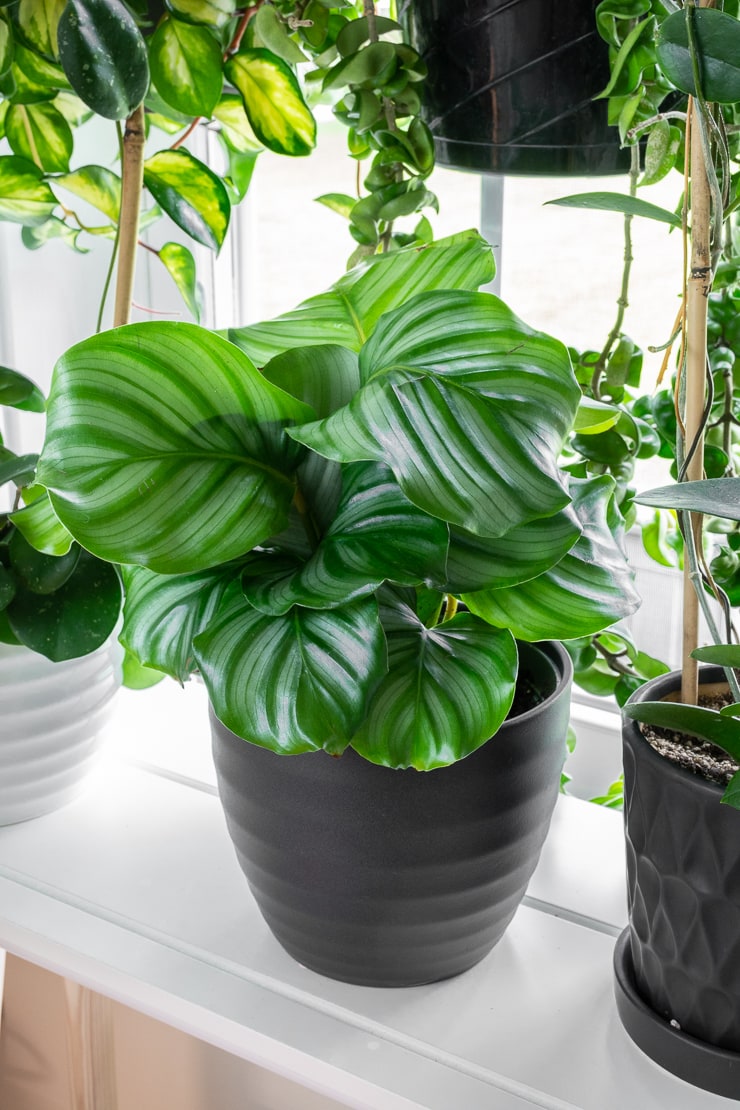
Calathea orbifolia is a tropical plant, so it definitely enjoys warmer temperatures. However, it is generally fine in all normal household temperatures.
If you have your orbie outside for the summer, be mindful of those scorching hot days. The plant might react poorly if there are too many days over 90 degrees. And make sure to watch how quickly the soil is drying out when it is warmer!
The plant will not be happy in temperatures below 55 degrees Fahrenheit. It is not cold or frost hardy. I’m in zone 7, so I can’t have it outdoors all year—boo hoo. But if you’re in USDA zones 9, 10, or 11, it’s likely you can!
I recommend using an organic fertilizer for your plant. Worm castings or something like Liqui-Dirt are perfect. I’ve started using Liqui-Dirt this year and am enjoying the results.
Keep in mind that if you are repotting your plant with fresh soil, you are likely using a soil mixture that includes a slow-release fertilizer of some kind. So that will be good for probably about 6 months or so! Don’t waste your expensive fertilizer 🙂
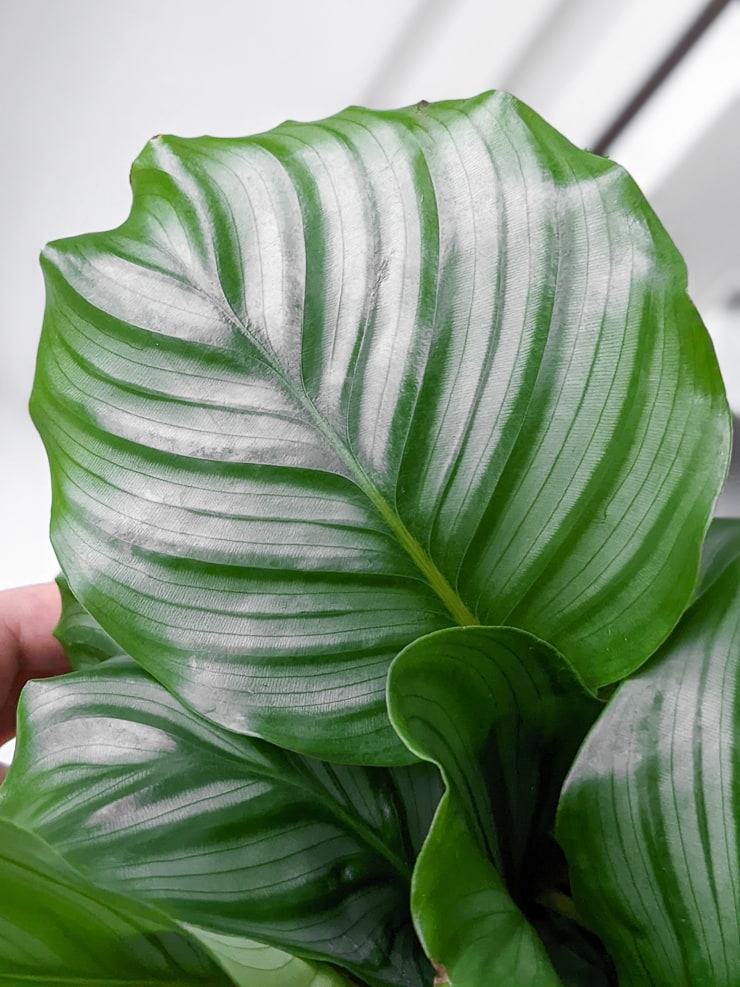
Ok—so the thing that makes the calathea orbifolia higher maintenance and a bit more difficult to care for is its love for humidity. I would choose for 60% humidity or more, which is virtually impossible to obtain in the average household without a humidifier.
I have seen people recommend misting plants, grouping them together, or adding a pebble tray with water in it to help boost humidity levels. And generally this is probably fine for some plants that enjoy higher humidity levels but don’t throw an absolute FIT without them.
For calathea plants in general, though, a humidifier is probably the best idea. Or enclosing the plant in a weather-stripped glass cabinet to keep humidity levels high. (I have an Ikea glass greenhouse cabinet, but I don’t have mine weather stripped to fully seal it.)
You can also choose to put your orbifolia in a bathroom, where hot showers and baths help with humidity in the air. I have my hoya linearis in a bathroom by a window for this reason, and it is super happy. No room for the orbifolia though.
Depending on where you live, taking the plant out for the spring and summer could be smart. Where I live it gets super humid in the spring and summer, and plants love it.
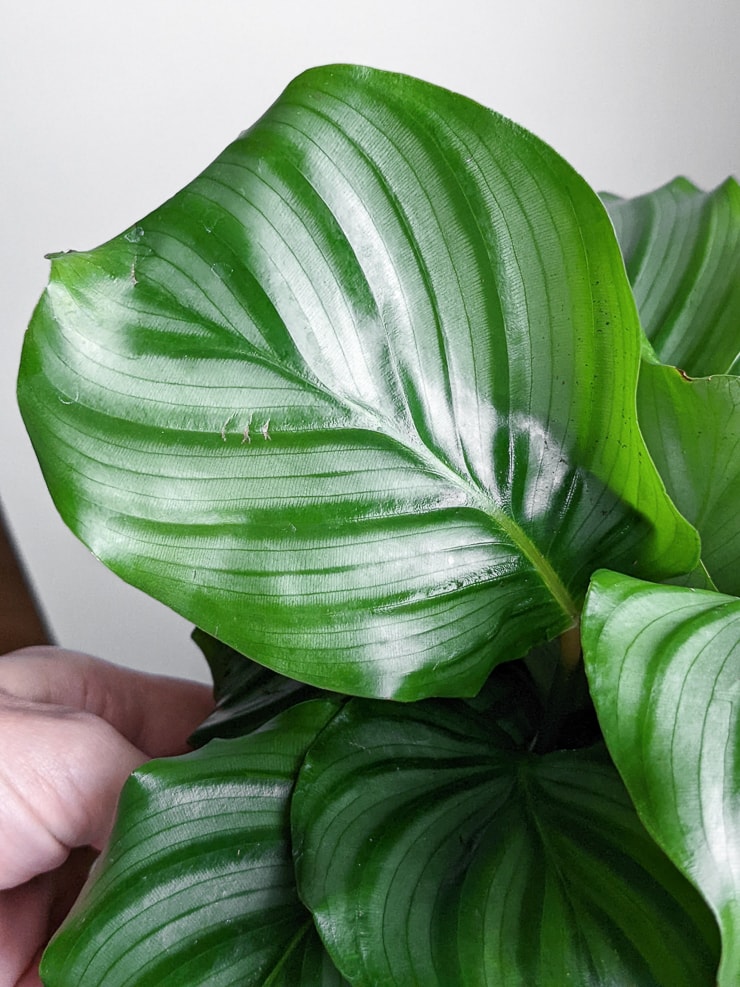
This is a relatively slow-growing plant. Leaves emerge from the center of the plant, slowly unfurling from what looks like a tightly rolled-up piece of paper.
The plant gets large, but the leaves stay relatively compact. You can trim off older browning or yellowing foliage. Older foliage dying off is not necessarily cause for concern—just the circle of life.
I recommend repotting your calathea orbifolia only when the roots begin growing out of the pot’s drainage holes. Or when the roots circle the bottom of the pot tightly enough that you can pull the whole plant out of its pot without mess.
Since this is a slow-growing plant, it does not need to be repotted very often. Check for the root growth, and if you need to size your pot up, choose a new pot that is only about an inch bigger. And use fresh soil when you repot as well, trying not to disturb the existing root ball too much.
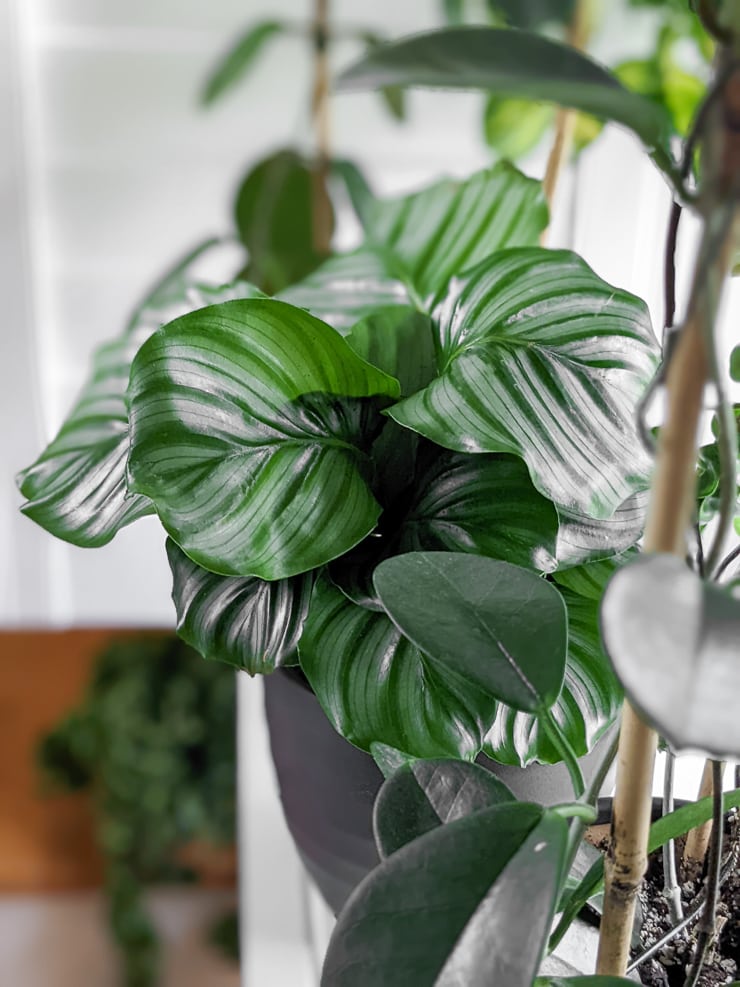
Calathea orbifolia is unfortunately also vulnerable to a variety of houseplant pests: mealybugs, spider mites, thrips, and more. (I have posts all about how to find and treat mealybugs, how to get rid of thrips on houseplants, and how to spot and battle spider mites.)
Check your plant’s leaves—top and bottom—for signs of webbing, teeny tiny crawlers, or discolored spots. A tell-tale sign of thrips is deformed new leaves, too. Those little bastards love to feed on that fresh new foliage.
If you notice any of these things, isolate the plant and treat it immediately with an insecticide spray designed for houseplants. Once you can determine exactly what pest you’ve got, you can take a more targeted approach.
Don’t panic, though. I have battled several houseplant pests successfully. It is never fun, but it is always a learning experience!
One issue with calathea orbifolia, and other calathea plants, is that they attract fungus gnats. That’s because the plants like for their soil to remain evenly moist for the most part. And fungus gnats looooove to lay their eggs in the top inch or two of soil if it is moist.
If you develop a fungus gnat problem, I recommend scraping the top half inch or so of soil off your plant and throwing it away. Then use a fork or toothpick to break up the top few inches of soil.
This helps aerate things and dry it out faster. Let the top few inches of soil dry out before watering the plant again. And in the future, try to let at least the top inch or so of soil dry out before watering. This will help prevent the fungus gnats from moving in again.
You may notice a variety of issues on your calathea orbifolia. Here are a few things you could encounter and what the cause might be.
If you notice that leaves on your calathea orbifolia are beginning to fade and yellow, eventually dying, it could be due to overwatering. If the soil is too dense or if you are watering the plant too often, the plant can develop root rot.
Fading leaves could also be because of too much light, so check the soil to help you diagnose this problem.
If your calathea orbifolia is developing crispy brown tips, it’s likely a result of either lack of humidity or underwatering. If the soil is properly moist, look to humidity.
If the soil is bone dry, though, it might be a combination of both! Try adding a humidifier and trimming off the damaged foliage.
If your leaves are wilting and generally looking sad and limp, check the soil. If it is bone dry, it’s probably due to underwatering. Use a fork to break up the soil and give the plant a deep watering.
If the soil is wet, moldy, or both, it could be overwatering. Wilting and dying leaves can be a sign of root rot, and root rot is definitely a result of overwatering.
You may be able to save the plant by backing off watering, trimming the dying foliage, and resuming a normal watering routine. Normally I would recommend repotting and trimming the dead roots off, but orbie can throw a fit from repotting shock. So it’s best not to introduce another variable.
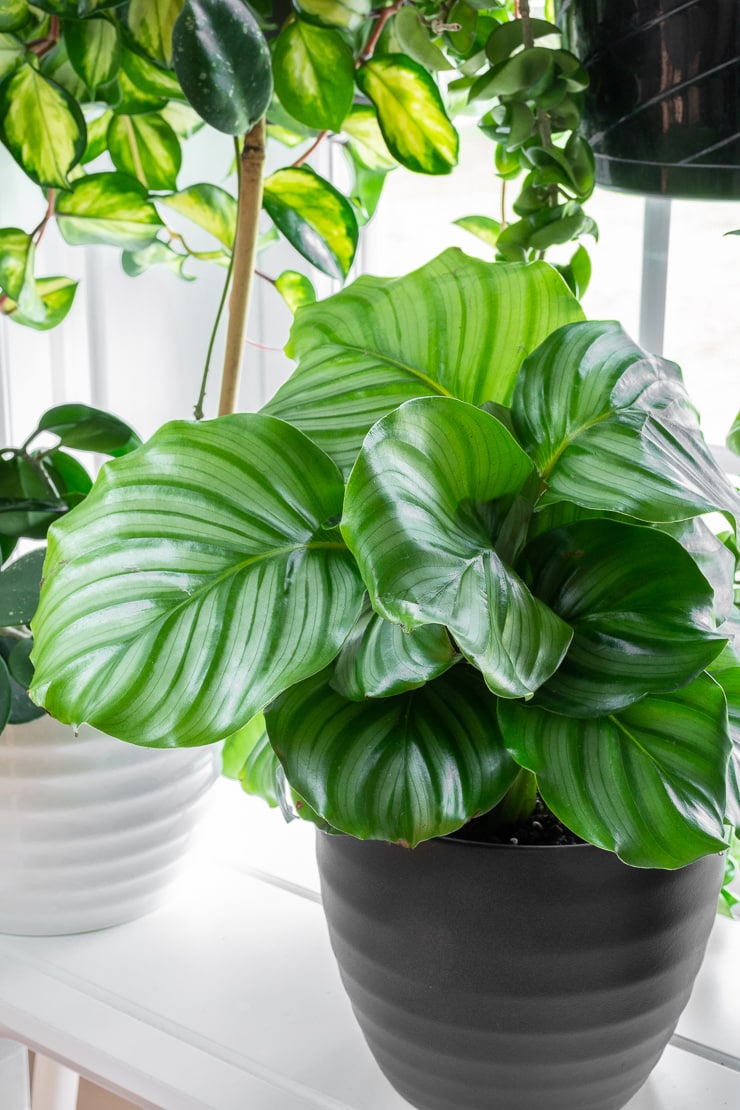
You can propagate a calathea orbifolia plant by separately it at the rhizome level. To get started, take the plant out of the pot and gently remove soil from around the rhizomes and root ball.
You will begin to notice whether there are multiple plants and also where they sprout. Separate the different plants at the rhizome level, making sure to take some of the roots with you.
I recommend using some rooting gel or rooting hormone powder on both pieces you are repotting. Orbifolia can throw a fit when repotting, so rooting hormone could help a bit. Also, separating in spring is helpful, too.
Repot the plants in an appropriately sized pot with fresh well-draining soil. Keep them warm and happily humid while the plants acclimate to their new homes. You can resume normal treatment of this plant once you see new growth.
